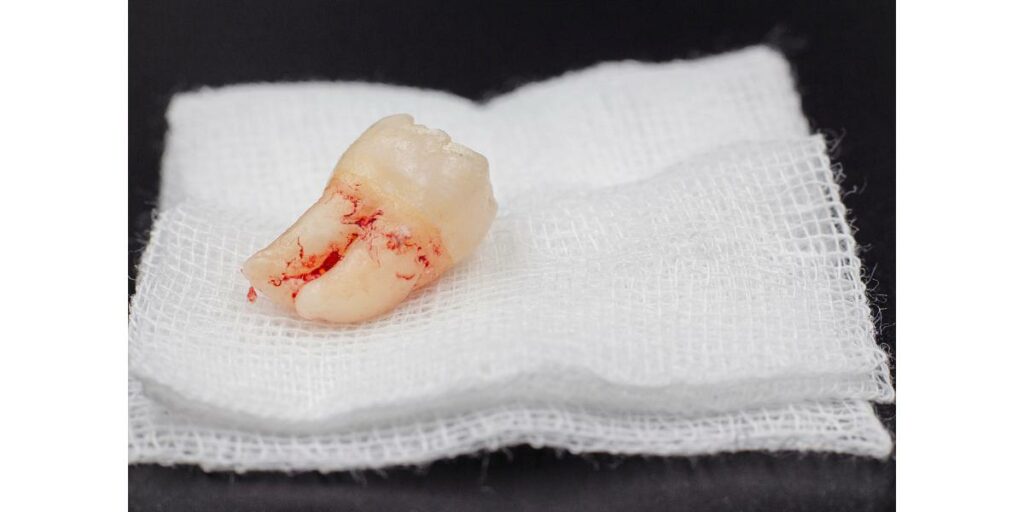Wisdom teeth removal does not permanently change face shape. While temporary swelling is common during the healing process, facial bone structure and external appearance remain unchanged once recovery is complete. Proper post-surgery care helps ensure any puffiness resolves within one to two weeks.
You’re sitting in the dentist’s chair, getting the news: it’s time for your wisdom teeth to go.
If your mind immediately jumps to “Will this change how my face looks?” — you’re not alone. It’s one of the most common (and understandable) concerns patients have.
Good news?
For the vast majority of people, wisdom teeth extraction doesn’t permanently change face shape. While you might notice some swelling, puffiness, or slight tenderness during healing, your natural bone structure — the part that defines your jawline and cheeks — stays put.
Still, it’s smart to know what to expect. Because when your face feels different (even temporarily), it’s hard not to wonder.
Table of Contents
Understanding Wisdom Teeth and Their Role
Ever wondered why we even have wisdom teeth in the first place?
Blame evolution. Thousands of years ago, our ancestors needed extra molars to grind down tough, raw plants and meats. Fast-forward to today, and thanks to softer diets — and smaller jaw sizes — most of us don’t have the room to accommodate them anymore.
Wisdom teeth (third molars) usually show up between ages 17 and 25, though some people never develop them at all. When they do emerge, the problems can range from mild crowding to painful impaction under the gums.
Typical trouble signs include:
-
Wisdom teeth pushing sideways
-
Only partially erupting (leading to infection risks)
-
Staying stuck beneath the gum (completely impacted)
Dentists often recommend early removal to avoid a domino effect of crowding, decay, and misalignment later on.
How Wisdom Teeth Fit into Facial Anatomy
To fully understand why wisdom teeth removal does not alter facial structure, it is important to first consider the underlying anatomy.
The visible structure of your face — your cheeks, jawline, and smile — depends mostly on:
-
The mandible (lower jawbone)
-
The maxilla (upper jawbone)
-
Key muscles like the masseter and buccinator
-
Layers of skin, fat, and connective tissue
Wisdom teeth sit far at the back of the mandible and maxilla, tucked away like hidden extras. They’re not part of the critical architecture that gives your face its shape.

Do Wisdom Teeth Actually Support Cheek Fullness?
Not really.
Full cheeks come from deeper factors like:
-
Buccal fat pads (the squishy parts)
-
Strong cheek muscles
-
Skin elasticity (which naturally changes over time)
The idea that wisdom teeth somehow “hold up” your cheeks is a myth. Removing them doesn’t make your face hollow or sunken — because they were never major players in cheek volume to begin with.
???? One oral surgeon even compared wisdom teeth to attic boxes: “You can remove them, and the house doesn’t collapse.”
Pretty reassuring, right?
Why Some Facial Changes Seem to Happen Anyway
Here’s where it gets interesting.
Around the time most people get wisdom teeth removed — late teens to mid-20s — your body is already starting to shift naturally:
-
Bone density peaks and then slowly declines.
-
Facial fat distribution begins to change.
-
Skin elasticity starts to reduce, ever so slightly.
Meaning?
Even if you never had your wisdom teeth removed, you might still notice tiny changes in your jawline or cheek contours around this age. It’s part of growing up — not surgery side effects.
What Really Happens to Your Face After Wisdom Teeth Removal
Let’s break it down
Yes, you might look a little different for a few days after surgery.
No, it won’t last — and it won’t change your actual bone structure.
Temporary Changes You Might Notice
-
Swelling: Puffy cheeks are completely normal, especially around days 2–3 post-op.
-
Bruising: Some slight discoloration around the jawline can happen.
-
Tenderness: It may feel tight or stiff when you smile or chew.
???? Pro Tip: Using ice packs early, then switching to warm compresses later, can make a huge difference in speeding up recovery — much like managing Invisalign pain or post-braces tenderness.
Permanent Changes? Extremely Rare.
After about two weeks, most people can’t tell they had surgery at all.
Your jawbone remains strong. Your cheeks bounce back. Your face shape stays…well, your face shape.
In fact, if your wisdom teeth were causing crowding, removing them might even help your teeth — and your smile — settle into a healthier, more natural position.
(This is similar to how removing teeth for braces can sometimes improve facial symmetry.)
Factors That Influence Facial Appearance After Wisdom Teeth Removal
While wisdom teeth extraction itself doesn’t change your face shape permanently, how you heal can vary a little — and that’s where small differences come in.
1. Age and Bone Health
Younger patients (late teens to early twenties) tend to heal faster and more completely.
Their jawbones are still dense and resilient, making it easier for the surrounding tissues to snap back.
On the flip side, if wisdom teeth are removed later in adulthood, it might take slightly longer for swelling to subside — and minor shifts in tissue firmness could feel more noticeable.
(This concept is similar to how adult patients who get braces with a crown experience slightly different movement than teenagers.)
2. How Invasive the Surgery Was
Simple extractions (where the tooth pops right out) cause less trauma — meaning less swelling and faster bounce-back.
But when teeth are deeply impacted or lying sideways, the surgery is more involved.
Naturally, the more your oral surgeon has to work, the more your body will respond with inflammation.
Still, even after tougher cases, your face returns to baseline after healing — provided you follow post-op instructions carefully.
3. Your Personal Healing Style
Ever notice how some people heal from paper cuts overnight while others take forever? Same idea here.
-
People with naturally fast inflammation responses (and strong circulation) tend to bounce back quickly.
-
Others may experience longer-lasting puffiness — and that’s normal too.
Good nutrition, hydration, rest, and proper icing all give your body the best chance to recover swiftly.
(If you’re prepping for a smooth healing experience, many of the same gentle habits used when managing dry mouth with braces — like hydration and gentle oral hygiene — apply here too.)
Recovery Tips to Help Your Face Bounce Back Fast
Healing well after wisdom teeth removal isn’t just about feeling better sooner — it’s also the best way to ensure your face looks (and feels) totally normal again.
1. Ice Early, Heat Later
Apply cold packs during the first 48 hours (20 minutes on, 20 minutes off).
Switch to warm compresses starting day three to encourage circulation and bring swelling down faster.
2. Sleep Elevated
Prop yourself up with an extra pillow or two.
Sleeping flat makes swelling pool in your cheeks — and nobody needs that.
3. Follow Soft Diet Rules
Stick to smoothies, soups, and soft foods for the first 5–7 days.
Hard chewing can strain healing muscles and increase swelling.
If you’re wondering how to balance this with braces recovery, many helpful ideas overlap with our foods to avoid with braces guide.
4. Don’t Skip Gentle Cleaning
Keeping your mouth clean (without aggressively rinsing) helps prevent infection, which can worsen swelling.
Gentle cleaning is key — much like smart brushing tips after braces, as explained here.
Ready to Protect Your Smile?
✨ At Hulse Orthodontics, we’re passionate about helping patients maintain healthy, beautiful smiles — whether you’re considering wisdom teeth removal, orthodontic treatment, or post-braces care.
???? Call or text us today at (760) 448-1344 or contact us here to schedule a consultation. We’re here to support you every step of the way!
The information provided in this blog is for educational and informational purposes only. It is not intended as a substitute for professional medical, or healthcare advice. Always consult with a qualified healthcare provider for diagnosis, treatment, and answers to specific medical questions.

Dr. Cameron Hulse grew up in Southern Orange County, California. While in his own orthodontic treatment in high school, Dr. Hulse realized how much his new smile changed him and decided he wanted to improve other’s teeth and smiles. Dr. Hulse pursued his dream and completed a BS in Zoology at Brigham Young University. Then he was selected to attend the University of Southern California’s prestigious School of Dentistry where he received his D.D.S.. After Dental School, he switched coasts and completed his orthodontic residency at Jacksonville University where he received his CAGS.



